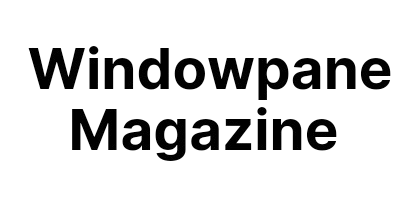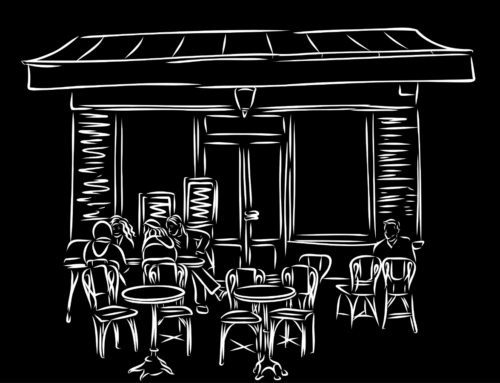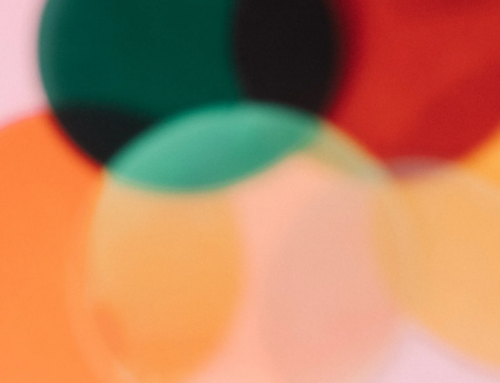How Do We Regain Our Hair Identity?

In the later afternoon of the same day, I went to the hairdresser’s shop to show her the style I saw on Pinterest — the briefly popular koroba with rolls. I showed it to her on my phone, and she looked at it and said it was fine and it would fit me. She told me to give her money for attachment so she would buy it in advance to remove it. I did and I went back home.
The following day, Wednesday, I was at the salon by mid-day. As she held my hair to start weaving it, she asked to see the style again. I showed it to her. She looked at it and proceeded to make the spawn of the devil in hair form on my head — Koroba with attachment.
Two days later, my mom would look at the style on my phone in just a glance, as I wailed from pain beside her, and say repeatedly;
“This hairstyle isn’t Koroba, it is half-parting. Koroba with attachment is very painful, it is too painful! Why should a hairdresser with experience make Koroba for you when the hairstyle you showed her is half-parting? Why would she even make Koroba with attachment on someone’s head?”
I wouldn’t be able to answer these questions.
However, on Wednesday afternoon, as the hairdresser’s deft hands worked on my hair, I began to feel a pain, which I naively attributed to the usual pain of doing hair.
When she finished, I noticed two things.
Firstly, the hair didn’t look like what I saw on Pinterest. The Pinterest style was worlds apart from what I saw on my head, but I decided to love it. I couldn’t face the thought of loosing it because I had spent money.
Secondly, as I walked home under the glare of the sun, the centre of my head where the star of the Koroba was, stung. It felt like spirit on a wound. Again, I thought it was just a pain that would be eased after a night’s sleep and at worst 2 paracetamol, but by that night when I was almost crying because I couldn’t sleep, I had no choice but to eat my thoughts.
My mom asked me if I was feeling any pain, and I replied, “Small, small”. She would go out and come back again to ask me why I chose to do Koroba, a hairstyle that even when done ordinarily without attachment, is quite uncomfortable, not to talk of doing it as Ghana weaving.
“I’m sure it is paining you,” she finished. “Sorry, take paracetamol.”
“I have. I swallowed two. Will the pain relieve me after 2-3 days?”
“No, this is how it will pain you till you loose it. It will even become sores. Let me use ori for you.”
My mother rubbed ori on the spot and I winced as she did so, but it did little to ease my pain.
I couldn’t sleep; it was there beckoning to me, but I couldn’t answer it. I didn’t even know how to place my head on the pillow, which I was forced to use as I don’t typically, because I thought the elevation would relieve some of the pain — it did not.
The pain neared excruciating.
My mom couldn’t wake me to wash plates in the morning because my eyes were wide open from pain. I couldn’t bend down. I felt dizzy and nauseous. I ate and eating felt like lifting a mountain. My mom left for work and I had to call her later to tell her I was coming to her shop to loosen the hair — I couldn’t endure it anymore.
Three days after loosing it, I couldn’t touch the Koroba star spot without wincing in pain. I told the story to two of my neighbours. Here are their responses.
Neighbour 1: “Ha, Koroba is quite painful with attachment indeed. Sorry. (Thank you ma.)
Neighbour 2: Sorry, you should have put a cloth into hot water and massaged the spot with it then added ori. The pain would have disappeared.” (I used two paracetamols and my mom also put ori on the spot but it was still painful.) “You should have endured it, the pain would have disappeared in two days.” (I was told the spot would turn into sores if I had left it, several people told me.) “Don’t mind them, I used to make it when I was younger and I would endure the pain and nothing would happen.” (Ha, okay, okay. Maybe next time.) “Yes, add hot water next time and you will be fine.” (Thank you ma.)
Does beauty have to come with pain?
Throughout my adult life, I can’t remember a time I have made my hair without feeling pain. It always hurts. One time, I was doing knotless braids and I was pushed to tears; the hairdresser weaved my hair with a lot of force and I had to wince in teary pain each time she had to weave my hair to start a new braid.
Why is it this way? Why is the modern process of making our hair as Nigerian women painful?
My grandmother told me stories about her days and the different hairstyles she did. An older woman, a hairdresser, who I interviewed at the University of Ibadan told me similar stories about the styles she used to do for women in the old days. Hairstyles like ipako ẹlẹdẹ, shuku, kojusoko, patewo, and several others. My grandmother and this hairdresser never associated pain with the beauty of hair.
I wonder the reason for this.
Perhaps because at that time there was little to no influence from Western media, and the concept of a global village was just at its inception. The women only knew their immediate environment and they determined the beauty standards based on what they knew. They didn’t know of attachment, wool, and weaves. There were no ways to manipulate the hair except by adorning with beads. All they did was weave their natural hair in natural styles the hair didn’t rebel against with pain.
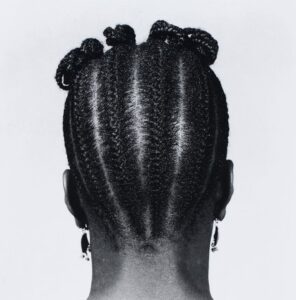
Now, our standards of beauty have changed. Our natural hair is now largely considered unkept and unfitting for important occasions. A video of a so-called influencer went viral months ago, in it she said natural hair isn’t suitable for formal outings and she would never associate herself with the act of wearing natural hair publicly.
In my opinion, such a person has no hair identity and I wonder what the values they hold dear as an African (Nigerian) is rooted in. For people like this, weaves are better and I have to ask that are these weaves not people’s natural hair too? The weaves (human hair) industry has been rightly criticized because of the unethical act of buying hair from impoverished women to turn it into weaves. This influencer is okay with wearing hair gotten through such means — wearing the natural hair of impoverished women who had to sell their hair to make ends meet — but their very own natural hair is where they draw the line.
Oluremi Martins is doing an innovative and wonderful job of developing weaves in a lab with Texture Science Labs. I believe this fills the gap of the ethical issues raised in the hair industry because Texture Science Labs is making hair with science and technology instead of cutting the hair of impoverished women in exchange for undignified money.
However, I still think there is a huge gap in how we perceive our natural hair as Africans (Nigerians). We are not connected with our hair and I think it is a problem (or will become a problem) when an entire race of people have no connection with one of the most fundamental things that makes up where a person belongs. Without our hair, where do we belong?
When are we regaining our hair identity as African (Nigerian) women? When do we feel at home with our hair again?
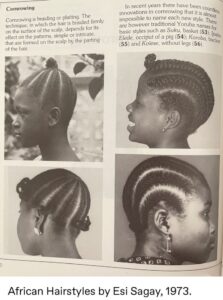
Why can’t I do my hair in stunning Kojusoko on a date? Why can’t I do Ipako ẹlẹdẹ for a wedding occasion? Why do I have to be shamed about regaining my hair identity when I wear it out in its glory? Somehow we have gotten to a point in our culture where our natural hair is seen as dirty and informal.
I took the scissors to my relaxed hair a few moons ago. I’m growing it again, and I have had the urge to relax my hair to “tame” it, but I didn’t give in. I love that my natural hair is wild and stubborn. It is my identity as an African woman; as a Yorùbá woman from Nigeria. I won’t relax it because doing so is washing away an important part of my identity.
Furthermore, I’m deeply concerned about how we have accepted pain as a natural part of our hair beauty routine. Why do I have to use paracetamol to relieve pain from simply making my hair? Where is this pain from? The hairdresser’s hard hands? The extensions’ clinginess? Or is our hair simply rebelling? Is that why it cuts and damages when done in these painful styles but retains its glory when done in natural styles which we now term as protective styles? Why are these natural styles protective and pain-free? Isn’t it because our hair loves freedom and it is only free when left to breathe in hairstyles that don’t require pain relief?
I’m in a deep search for who I am and who I want to be. I want to remove myself from feeling unseen and regain myself and my identity, and I believe a clear path to that having a deep connection with my hair.
My hair is untamed because it is free. I have made a pact with myself to no longer depend on hairstyles that cause me pain to feel beauty. I am beautiful because I am, and my hair knows this.

